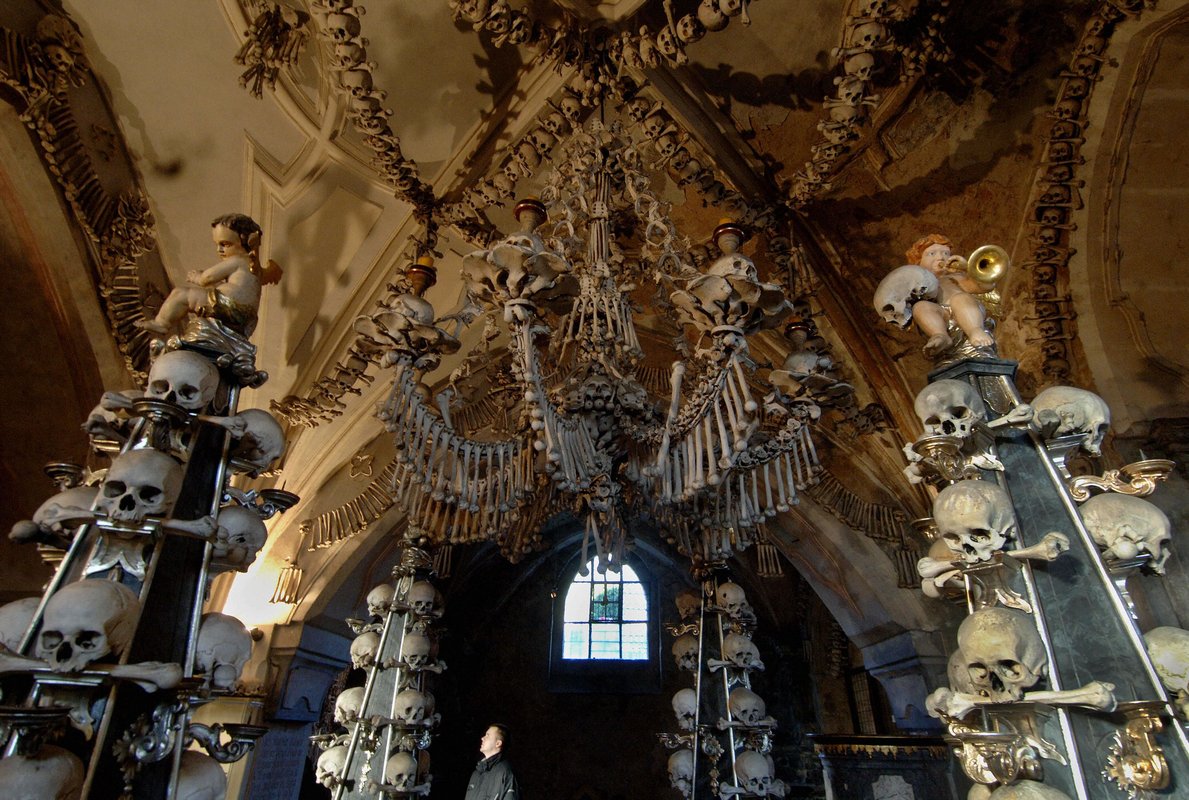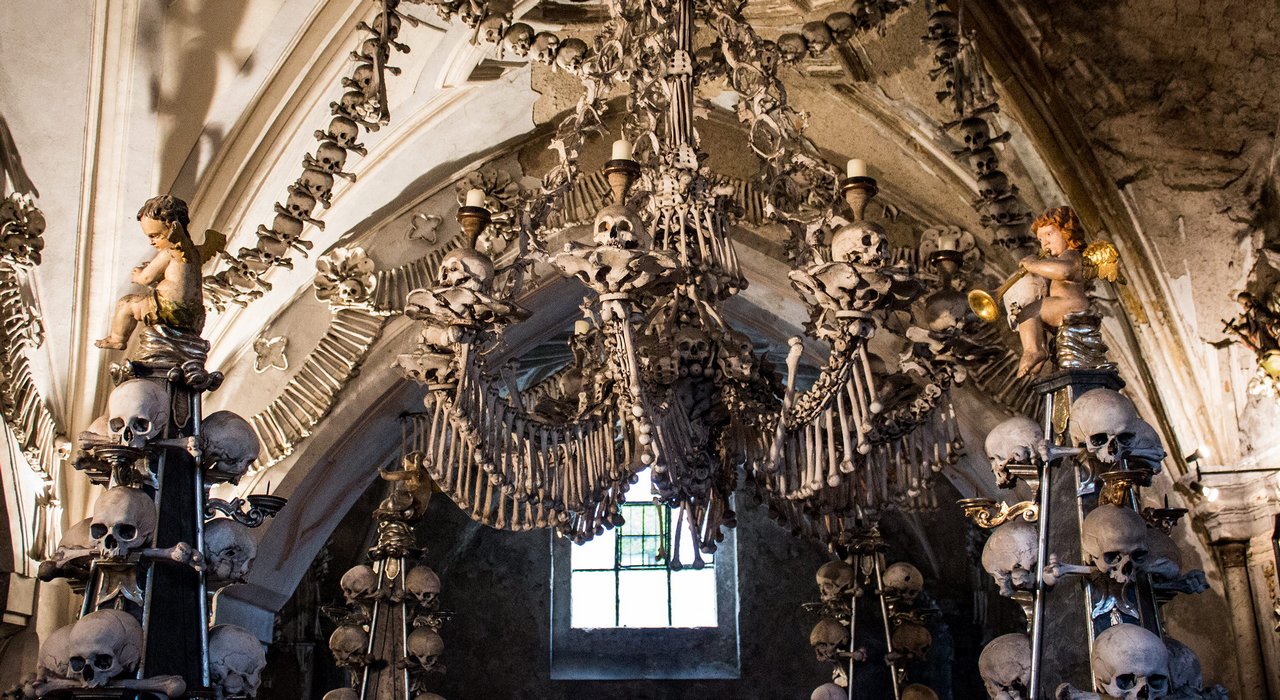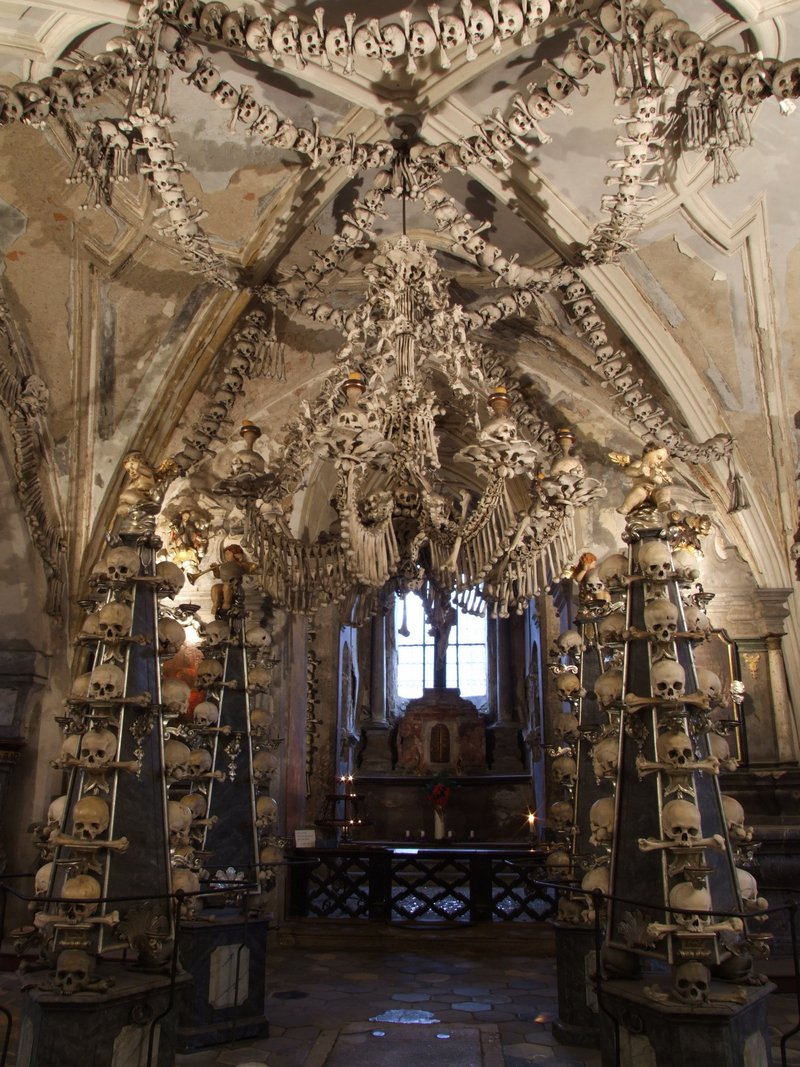In the heart of the Czech countryside, Kutná Hora houses some of the most beautiful architecture in the whole of Bohemia.
Positioned around 70 kilometers (about 43 miles) east of Prague, this medieval city competed politically, economically and culturally with the capital city during the 13th to 16th centuries, thanks in part to the silver mine boom that enriched the area at the time.
Today, however, Kutná Hora displays a more sedate, yet impressive vision of Czech culture and tradition — hence its UNESCO World Heritage Site status. But amid its Baroque-style buildings and medieval churches, lies an attraction that’s definitely not for the faint-hearted traveler.
Take a short walk through the narrow streets of the small suburb of Sedlec and you’ll reach a quaint yet eerie chapel.
And while the Church of All Saints seems rather unassuming from the outside, lurking underneath is an enthralling tale of mystery and death.
Down a small staircase, in the lower chamber of this Roman Catholic church, lies the Sedlec Ossuary, which is adorned with around 40,000 human skeletons.
Dubbed the Church of Bones, the story behind this grisly attraction begins in 1278, when the King of Bohemia sent the abbot of the Sedlec Cistercian Monastery to Jerusalem.
He’s said to have come back with a jar of soil from the Golgotha, the site where the crucifixion of Jesus Christ is said to have occurred, and spread it around the local cemetery.
When news of the “Holy Soil” became public, people from all over the region started requesting to be buried there.
The bones that currently reside in Sedlec Ossuary were exhumed from this site in the 15th century to make room for the town’s expansion, as well as new burials.
They apparently lay stacked in the basement of this Gothic church until 1870, when a woodcarver named Frantisek Rint was appointed to excavate and organize them. The result is spectacularly shocking.
This underground chapel contains a chandelier made entirely of bones, as well as garlands of human skulls.
To the left of the chandelier, sits a coat of arms formed of the bones of the Schwarzenbergs, an aristocratic Czech family who once ruled over the city.
Meanwhile, a collection of human skulls piled on top of each other stands to the right.
Each is accompanied by religious displays arranged out of bone, reminding visitors that the chapel remains a respectful place of worship, despite its rather macabre contents.
 Alghadeer TV Alghadeer TV
Alghadeer TV Alghadeer TV




